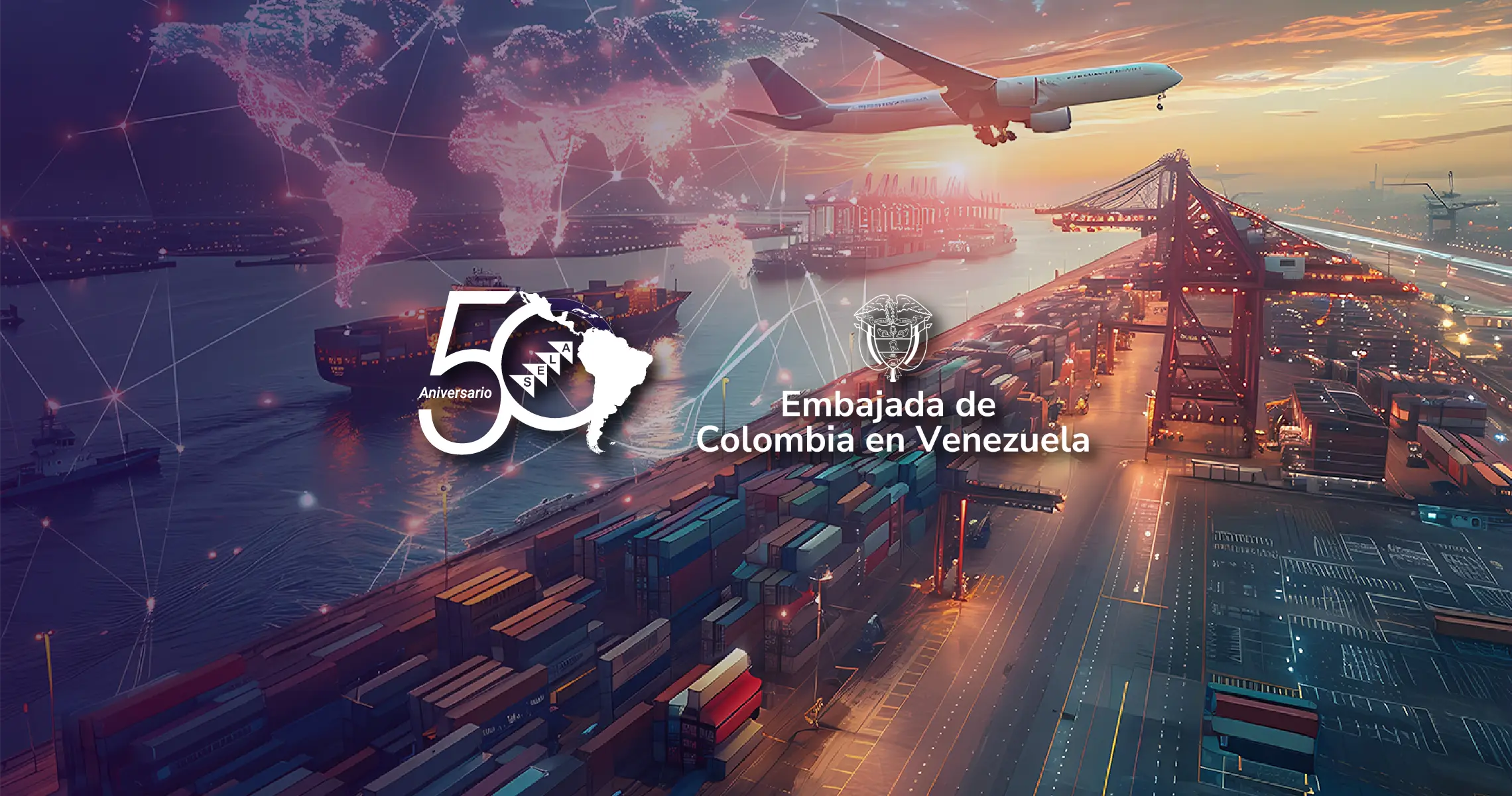
In a regional economic context characterised by gradual recovery from the effects of the pandemic, Latin America and the Caribbean face a scenario of challenges and opportunities. The region has shown signs of moderate growth, with a Gross Domestic Product (GDP) that, according to recent figures published by the International Monetary Fund, indicates that the region registered a growth of 2.4% in 2024, driven by the recovery of key sectors such as agriculture, mining and manufacturing. However, structural challenges remain, such as inequality, dependence on commodity exports and vulnerability to international market fluctuations.
In addition, recent economic trends are marked by increased uncertainty, in part due to US and Chinese trade announcements. Recent tariffs and protectionist measures adopted by the US seek to strengthen its domestic industry, while China continues to expand its commercial influence through agreements and policies that aim to consolidate its position in the global economy. These dynamics generate dual impacts for Latin America: on the one hand, they open up opportunities to diversify and strengthen local productive sectors, especially those in which the region has comparative advantages; and on the other, they pose challenges related to competition and the need to adapt to a constantly changing trade environment. In this regard, the IMF reduced growth forecasts for the region to 2%, considering the uncertainty in geopolitical and commercial matters and a possible reduction in credit.
The increase in tariffs by the US could mean a decrease in exports of certain Latin American products to that market, creating challenges for sectors such as agriculture, manufacturing and energy. It is worth noting that countries such as Guyana, Nicaragua and Venezuela face the highest tariff rates in the region. The rest of the countries face tariffs of 10%.[1]
Moreover, this situation could also open up opportunities for the region to diversify its trade partners and strengthen its ties with other markets, including its own intra-regional market. This trade scenario also influences the relocation of value chains at the global level, which could favour LAC countries offering competitive conditions in terms of labour costs, natural resources and regulatory stability.
Thus, it is crucial to analyse in depth the possible positive impacts and challenges that these trade dynamics represent for our countries. Which key productive sectors in LAC could benefit from less competition in the US market or from new opportunities in other markets? Sectors such as value-added agro-industry, renewable energy production, specialised manufacturing and knowledge-based services could find windows of opportunity. Similarly, it is essential to identify risks and design strategies to mitigate negative effects in those sectors most vulnerable to tariff policies.
The Permanent Secretariat of SELA has raised initiatives that address issues related to trade promotion and regional productive development, where the analysis of the main potential niches, the evaluation of revealed and undisclosed comparative advantages, and the design of strategies to increase the value added of goods and services is a fundamental part of the work programme, specifically the Productive Articulation Project. This project aims to strengthen regional economic integration, diversify productive structures and foster cooperation among member countries in order to face the challenges and take advantage of the opportunities of the global environment.
As part of this work programme, the Seminar: US tariffs? Opportunities for Latin America and the Caribbean, whose purpose is to generate a space for high-level dialogue among government representatives, the private sector, academic and other relevant actors to analyse the current trade situation and explore joint strategies to respond to the possible effects on the trade balances of LAC. In addition, this meeting seeks to analyse how the US and China’s trade decisions can become opportunities for Latin American countries, promoting productive articulation and the promotion of strategic sectors such as agro-industry, energy and light manufacturing, together with the promotion of regional integration and cooperation. The discussion on tariff changes and international trade trends is essential to guide public policies and business strategies in a changing global environment.
[1] In the case of Mexico, the country is part of the T-MEC, which allows strategic items to be free of tariffs.
Modality: Hybrid
Registration form: https://us06web.zoom.us/webinar/register/WN_BWkv75oYRl62s_e6jKJKMA
Language: Spanish and English. Simultaneous translation will be provided.
Venue: San Cristóbal, Venezuela.
Participants: Representatives of ministries of foreign affairs and governmental organisations linked to the theme of the event, as well as representatives of trade promotion agencies, the private sector and academia.
| 9:00 – 9:25 am
|
OPENING OF THE SEMINAR
Welcoming remarks (5 min each)
|
| . | |
| 9:30-10:30 am |
SESSION I: GLOBAL IMPACT OF TARIFFS: RESHAPING INTERNATIONAL TRADE Analysis of the effects of US tariff impositions on multilateral trade. The direct and indirect effects of these policies on various regions and sectors worldwide will be examined, including the disruption of global value chains, the responses of other countries and trading blocs, and the long-term implications for the stability and future of international trade. The objective is to provide a comprehensive overview of the new trade landscape and lay the groundwork for understanding the emerging opportunities for Latin America and the Caribbean. Moderator: Representative of SELA
|
| 10:30-12:00 pm |
SESSION II: PRODUCTIVE COMPLEMENTARITIES TOWARDS CHINA Determine how tariffs imposed on other geographical origins can function as an incentive for the growth and expansion of strategic sectors in LAC. Highlight LAC’s strengths and productive capacities in these sectors, opportunities to increase its global market share, strategies to improve competitiveness, investment in technology and innovation, and the creation of robust regional value chains. In addition, the challenges and policies needed to position LAC as a strategic and dependable supplier in the new international trade scenario will be discussed. Moderator: SELA
|
| . | |
| 12:00-12:30 | QUESTION AND ANSWER SESSION |
| . | |
| 12:30- 2:00 pm | LUNCH
PROJECTION OF THE PRESENTATION COLOMBIA COUNTRY BRAND BY PROCOLOMBIA |
 |
|
| . | |
| 2:30-3:30 pm
|
SESSION III: ROUND TABLE ON COLOMBIA-VENEZUELA STRATEGIC PARTNERSHIPS: GENERATING VALUE CHAINS.
A round table will be set up to discuss strategies and best practices to boost, revitalise and strengthen trade between Colombia and Venezuela. It will analyse the strategic role of regulations used in the integration of binational value chains, identify opportunities for productive complementarity, cost reduction and market access facilitation, in order to promote economic growth for both nations. Moderator: Daniel Barráez. UNDP Senior Economist in Venezuela
SELA: presentation of practical exercise for Colombia and Venezuela. Identification of key sectors in border departments of Colombia and national analysis of Venezuela. |
| 3:30-5:00 pm |
SESSION IV: CONNECTING BORDERS: LOGISTICAL CHALLENGES AND SOLUTIONS BETWEEN VENEZUELA AND COLOMBIA Analysis and discussion of the current conditions and challenges inherent to the logistics of transporting goods between Venezuela and Colombia. Participants in this session will explore existing roads, rivers and customs infrastructures, identifying bottlenecks, opportunities for improvement and for the fluidity of commercial exchange. The discussion aims to provide a clear picture of the complexities and potentials that optimise bi-national supply chains. Moderator: Maximiliano Vásquez, President of the Editorial Board of La Nación newspaper
|
| . | |
| 5:00 pm | CLOSING OF THE SEMINAR
|
